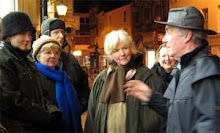
Just off the A4 between Marlborough and Devizes, stands a quintessential English pub; The Waggon and Horses. The pub was built in 1669 primarily as a coaching inn and bore the name The Black Bear. Predominantly constructed from sarsen stone which would have been found in abundance in parts of old Wessex and quarried from the Marlborough downs, or possibly the Avebury stone circles at a time when Neolithic stone circles offered little interest other than for building material, which is clearly evident in several of the cottages in Avebury village. In 1724 The Black Bear became The Hare and Hounds, possibly in response to the hare coursing which was prevalent in the area at that time. Finally in 1823, The Hare and Hounds became The Waggon and Horses, a name no doubt derived from the waggoner’s and drovers who frequented the inn having travelled along what is now the A4, a popular route used to drive livestock between Bath and London markets. The inn offered accommodation, grazing land for cattle and a stable and smithy.
The Waggon and Horses appears in Charles Dickens Pickwick Papers, it is likely therefore that Dickens may well have visited the inn at sometime during his travels to Bath, a city he is said to have loathed, describing it as ‘a mouldy old roosting place, built by a cemetery full of dead people‘. What follows is an extract from the Pickwick Papers, describing, it is believed, Tom Smart’s visit to the inn.
"Tom cast a hasty glance at the upper part of the house as he threw the reins to the hostler, and stuck the whip in the box. It was a strange old place, built of a kind of shingle, inlaid, as it were, with cross-beams, with gabled-topped windows projecting completely over the pathway, and a low door with a dark porch, and a couple of steep steps leading down into the house, instead of the modern fashion of half a dozen shallow ones leading up to it. It was a comfortable-looking place though, for there was a strong cheerful light in the bar-window, which shed a bright ray across the road, and even lighted up the hedge on the other side; and there was a red flickering light in the opposite window, one moment but faintly discernible, and the next gleaming strongly through the drawn curtains, which intimated that a rousing fire was blazing within. Marking these little evidences with the eye of an experienced traveller, Tom dismounted with as much agility as his half-frozen limbs would permit, and entered the house."
Hauntings
There are two ghosts said to frequent the public bar. An elderly lady dressed in a white smock thought to be the ghost of a previous landlady. She is most often seen standing at the bar (customers side) her features are always described as 'unclear' or 'misty', so no positive identification has ever really been forthcoming. She is quite harmless and when spotted will immediately vanish.
The other ghost is an elderly gentleman dressed in the style conducive of the Victorian era. He is always seen leaning against the fireplace whilst smoking a pipe. He is accompanied by a small dog which is curled up at his feet. Sometimes an unmistakable aroma of pipe tobacco has been noticed near the fireplace.
The A4, which passes immediately outside the pub is said to be haunted by a coach and four. The sound of galloping hooves and the clatter of carriage wheels has been heard to draw up on the cobbles immediately outside the pub. The local Police have said in the past, that the thunderous, audible distraction to passing motorists is believed to have been the cause of several accidents on the approach to the Beckhampton roundabout.
The old Roman road that passes close to Beckhampton was once a notorious spot for highwaymen who would seized every opportunity to rob the wealthy as they journeyed by coach from London to Bath in the 17th and 18th centuries. This ‘rouges thoroughfare’ may also account for several other reports of ghostly coaches and horses seen hereabouts and also the occasional sighting of a caped figure wearing a tricorn hat, believed to be the ghost of Walter Leader who was wrongly accused of the murder of a Royal Mail coachman. See sidebar for ‘Beckhampton Highwaymen…’
The pubs close proximity to Silbury Hill, the West Kennet Long Barrow, Avebury Stone Circles and the medieval market town of Devizes, makes it an ideal watering hole, providing excellent Wadworth beer from the wood and a refreshing menu of locally sourced produce, just what‘s needed after a day exploring the mysteries of Wiltshire’s ancient historic landscape.






1 comment:
In reasearching my family tree, I found an Isaac Low in a newspaper of 1837 and around there, saying auctions were being held for the tolls at his house, that being The Waggon and Horses Inn. I was wondering if, in your notes, you have the owners listed? Am looking for the name of Isaac Low or James Low or others. Also Selman. thanks. Enjoyed your write up!
Post a Comment